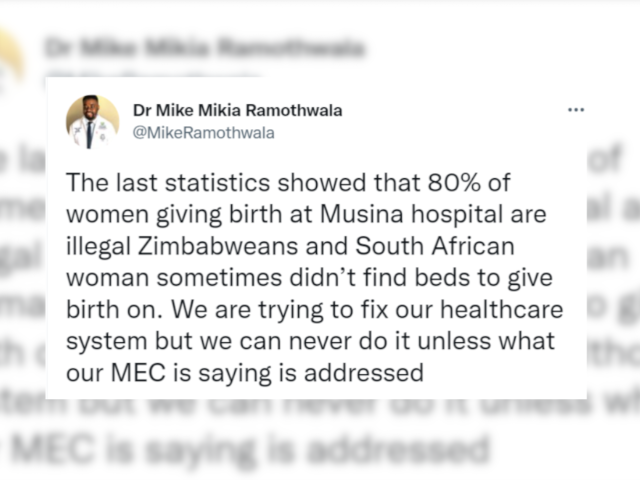This article is more than 3 years old
- Of the seven claims we checked, Oparanya was only correct that women are represented as required by law on county elected bodies.
- He was nearly on the money about the percentages allocated to health. His figures about allocations to agriculture didn’t add up, however.
- His claims about water and sanitation cannot be proven, while an expert told us that the 10% of budgets to be allocated to agriculture recommended by the African Union should be at both local and national levels of government, and not the sole responsibility of counties.
In November 2020 president Uhuru Kenyatta delivered a delayed state of the nation address, which we fact-checked.
But three months earlier the country’s governors had braved the Covid-19 pandemic to make their annual state of devolution address. Delivered by Wycliffe Oparanya, the chair of the council of governors, the speech is required by law.
Oparanya made a number of key claims, seven of which we fact-checked. These ranged from health and agriculture allocations to water and sanitation access.
(Note: Oparanya spoke on 23 July, three weeks into the new financial year. To effectively verify these claims, Africa Check waited for the office of the controller of budget’s report on the previous financial year. This was published at the end of September.)
Some of the data in the address was collected from the counties, the council’s communications office told Africa Check. They also referred us to the controller of budget’s report for the 2019/20 financial year.
The report shows the 47 county governments approved a combined budget of KSh499.6 billion.
We compiled data on what the counties allocated to their departments of agriculture. This was KSh34.4 billion, or 6.9% of their total budget.
We therefore rate this claim as incorrect. Experts have also previously told us that actual spending is just as significant a measure to track. – Dancan Bwire
In the 2019 state of devolution address, Oparanya gave the allocation to agriculture as 6.7%. We rated this claim as mostly correct as the average allocation was close enough, at 6.9%.
A jump from 6.7% to 7.3% though is an increase of 0.6 percentage points or 8.9%. We therefore rate this as incorrect. (Read our guide on how to avoid common statistical errors.) – Alphonce Shiundu
In 2014 the African Union met in Malabo, Equatorial Guinea’s capital city. The resulting Malabo declaration resolved to end hunger on the continent by 2025, and to ensure that “at least 10% of public expenditure” goes to agriculture.
Dr Timothy Njagi is a research fellow at the Tegemeo Institute of Agriculture Policy and Development, an agriculture policy thinktank in Kenya. He has co-authored a policy brief urging county governments to invest more in agriculture and increase household incomes.
The “correct computation” of the 10% target in the Malabo declaration “should be for the country”, he told Africa Check. This means total allocation and spending at both the national government and county government level.
Njagi highlighted a 2017 report by the country’s planning department that showed what he called a “disturbing trend” where the majority of agriculture spending was concentrated at the national level.
“For instance, between 2013 and 2017, 60% of the resources in agriculture were spent at the national level despite the majority of the functions being devolved,” he said.
The report notes that counties consider their allocations and expenditure to agriculture to include aspects of cooperatives and trade, yet these do not constitute the sector as defined at the national level.
In short, counties alone should not be chasing the 10% spending target. Therefore, we rate Oparanya’s claim as misleading.
Njagi added that beyond allocation the money should be channelled to the “right uses”. He gave some of these as research, extension services and markets. -Alphonce Shiundu
In the 2019/20 financial year, Kenya’s counties allocated a combined KSh128.9 billion to health in their budgets. This is according to the controller of budget’s most recent report.
As a share of their combined KSh499.6 billion budget, this works out to 25.8%. In 2019, Africa Check established the share of that year’s budget was 26%. Oparanya therefore understated his figure, but we rate the claim mostly correct.
However, breaking down the data reveals some regional differences. Some 13 counties allocated less than 24% of their budgets to health. Taita Taveta had the lowest at 7%, while the highest was Kirinyaga at 40%. – Grace Gichuhi
Water coverage is the “population with access to water services, either with direct service connection or within reach of a public water point, as a percentage of the total population under utility’s nominal responsibility”.
This definition is by the World Bank-funded International Benchmarking Network, a project that seeks to “support access to comparative information ... among water supply and sanitation providers worldwide”.
In Kenya, water coverage is tracked by the Water Services Regulatory Board. It’s most recent report, published in 2020, covers the 2018/19 financial year.
The data shows that water coverage improved from 57% in 2017/18 to 59% in 2018/19. In the absence of data for 2019/20, we rate council chair Oparanya’s claim unproven.
The report also notes that water service providers serve barely half, or 49%, of the national population.
“The trend in coverage has been growing, albeit slowly, with a growth of only four percentage points in the last five years,” it says. – Alphonce Shiundu
The Water Services Regulatory Board defines “sewered sanitation coverage” as “the number of people served with flush or pour-flush to piped sewer systems, as a percentage of the total population within the service area of the utility”.
Utilities with sewerage systems are measured on how they deliver sanitation services to their consumers.
The board’s most recent report, published in 2020, covers the 2018/19 financial year. It shows that sanitation coverage increased slightly from 16% in 2017/18 to 17% in 2018/19.
We however rate this claim as unproven as we do not have the board’s 2019/20 report that the governors referred to.
The report does note there has been a decline in coverage as the population rose rapidly, outpacing investment in infrastructure.
Only about 3.9 million people in 26 counties have access to sewered sanitation, it adds, with 61% of these people in the capital Nairobi. “This therefore implies that 21 counties lack any systems for waste management.” – Alphonce Shiundu
“CECs” refer to county executive committee members who form the county cabinet.
Kenya’s constitution prescribes that “not more than two-thirds of the members of elective or appointive bodies shall be of the same gender”.
According to the most recent economic survey from the national statistics office, all 47 county assemblies have met this threshold since the last election in 2017. The survey’s data is sourced from the council of governors.
For county executives, at least 30% of the county cabinets in 39 counties were female. The three counties cited by Oparanya, in addition to Mombasa, had achieved gender parity.
Some counties that failed to achieve this included Kitui, which had no woman county executive in 2019, Nairobi and Kisumu (both 25%) and Kericho (16.7%). – Alphonce Shiundu





Add new comment